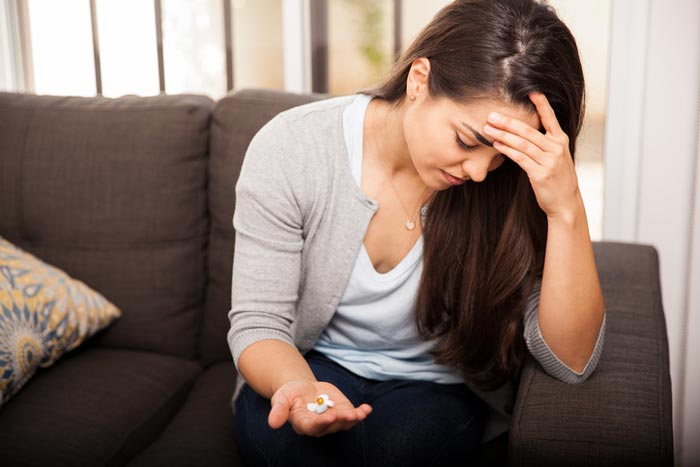
By Deborah Hilcove
Imagine the pain. It’s chronic, ongoing and governs every waking moment.
Maybe it’s a result of cancer, arthritis or surgery. Perhaps it’s from a sports or recreational injury, a car or home improvement accident, a fall. Most likely, it’s lower back pain, a challenge to treat and one of the most common reasons for doctor visits in the U.S., according to the American College of Physicians.
A February 2017 report notes:
“Approximately one quarter of U.S. adults reported having low back pain lasting at least one day in the past three months.”
Although acute and subacute lower back pain usually resolves itself with time, regardless of treatment, sufferers are often impatient and insist on quick relief through medication.
According to a recent government report, more than 189 million painreliever pills were dispensed last year in Maricopa County alone. That’s enough for two weeks of around-theclock medication for every Maricopa adult.
The misuse of these drugs can lead to poisoning, the leading cause of hospital emergency visits, where a single visit can cost upwards of $5,000.
But how does a patient get from pain relief to reliance to addiction? It often starts with low-back pain and a certain amount of opioids prescribed by a doctor for a specific condition.
However, when the pain does not resolve within that time frame, the patient—who may have unrealistic expectations for pain management— might try to get increased and stronger doses of codeine to lessen the pain.
When the doctor, who is governed by strict anti-drug abuse controls through state and federal agencies, restricts or refuses further prescriptions, then a chronic sufferer might turn to illegal street drugs, and perhaps heroin.
But there are alternatives to pharmacological treatment. The Center for Disease Control and Prevention suggests:
“Start low and go slow,” meaning the lowest possible effective treatment
should be the first line of pain treatment.
Physicians may initially suggest a multidisciplinary regimen of heat and cold, along with nonsteroidal, overthe-counter, anti-inflamatory drugs (NSAIDS) like aspirin and ibuprofin, or pain-relievers, like Tylenol.
Sometimes topical counterirritating creams and ointments, like those containing capsaicin found in chili peppers, keep the nerves busy and block pain.
Depending on the location of the injury and the patient’s physical health, a physician might suggest tai chi or yoga. Other possibilities might include referrals to a pain clinic, an acupuncturist, psychotherapist, “mindfulness meditation” teacher or massage therapist—always with emphasis on utilizing an experienced, licensed professional.
In a University of Kentucky study published in April 2017, William Elder, who is the principal investigator, supports using massage therapy prior to opioids to alleviate lower back pain. Because massage increases blood flow to sore, stiff joints and muscles, the extra circulation warms the muscles. It also releases natural endorphin painkillers, as well as oxytocin, the hormone produced by a woman’s body before childbirth.
Rick and Devena Spears, co-owners of Physician’s Choice Massage in Tempe, offer medical massage as an alternative to pharmacological treatment, claiming “more than 90% success rate of pain management, increasing or regaining range of motion and helping to improve quality of life.”
Although medical massages may be an out-of-pocket expense, Physician’s Choice offers introductory
and periodic specials.
Says Devena Spears:
“Correctly assessing and treating the postural misalignments and dysfunctions are imperative in medical-based massage treatments.” She adds, “Our medical massage is a very focused, knowledgebased application that includes anatomy, kinesiology and physiology implements. “
“I share my opinion,” she says, “that opioids are globally abused more than most can begin to imagine. And opioids don’t fix pain, but instead often lead to addiction and destruction of our own body’s systems.”
A second level of treatment for chronic, ongoing pain might include prescribing skeletal muscle relaxants, like Soma. Other possible treatments include biofeedback, ultrasound waves or a TENS unit to stimulate increased production of the body’s own painkilling endorphins.
As a last resort for severe and chronic pain—and before suggesting surgery—the CDCP advocates the careful, supervised prescription of painkillers, such as Percocet, Vicodin or OxyContin—prescribing these powerful opioid pain relievers only after other therapy has failed.
Spears, who has studied massage and sports medicine, says she was drawn to the massage therapy field “largely from growing up with my youngest brother who was born with cerebral palsy, seeing his struggles, his limitations and his pain.”
She summarizes, saying:
“It gives me great pleasure to help people get out of pain and gain back their mobility. Sometimes helping a person relieve pain or regaining strength in a small body part, such as a finger, is a big deal when it comes to being able to simply grasp an object or opening the lid of a jar.”


